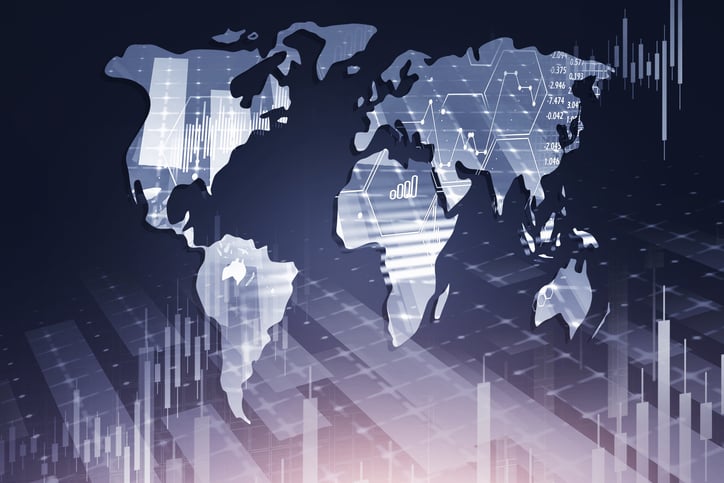What’s in Store for the Supply Chain in 2025?

From disruptions in the Red Sea shipping and rail strikes, to port closures and expected changes in trade tariffs, 2024 presented significant challenges for the global supply chain, revealing both vulnerabilities and key opportunities for building resilience.
But what lies ahead for 2025? Ten key trends will shape the future of the supply chain.
Building on the lessons learned in 2024, businesses will adopt strategies and supporting technologies to strengthen their supply chains against volatility and disruptions. At the same time, they will focus on mitigating potential risks by leveraging advanced intelligence gained from greater transparency across the entire supply chain. This enhanced visibility will enable data-driven decision-making, improve responsiveness and drive efficiency, ultimately creating a more resilient and agile supply chain.
Focus on data quality. Accuracy and reliability of source data are key to the outputs produced via artificial intelligence (AI). As more companies adopt AI automation to streamline processes, obtaining accurate, timely data across their entire supply chain remains a daunting challenge for both suppliers and buyers. With AI driving demand for large volumes of high-quality, transparent and traceable data, leveraging automation to enhance data quality remains mission critical.
Managing risks. Global supply chains faced many challenges in 2024, which was marked by significant disruptions. Events such as Houthi attacks on vessels in the Red Sea, Canadian rail strikes and the closure of China’s Ningbo Port following an explosion on the container ship YM Mobility had widespread impacts. These events — whether geopolitical, economic, or environmental — highlighted the vulnerabilities of supply chains.
Forward-thinking businesses have taken steps to mitigate these risks by leveraging technology and data to enhance transparency and communication across the supply chain in order to prevent bottlenecks and enable the swift identification of alternative routes or suppliers.
Cost savings. Investments in AI-driven market intelligence and analytics are paving the way for an acceleration of cost savings. By enabling organizations to uncover supply market insight, find alternative sources of supply, and secure more favorable contract terms, real-time intelligence is helping reduce costs. These solutions empower businesses to enhance their bottom line without sacrificing quality, creating a competitive edge in an increasingly demanding market.
Complying with new international regulations. Rising consumer awareness of sustainability, ethics safety, and quality is fueling greater regulatory scrutiny of supply chains. A notable example of this is the Uyghur Forced Labor Prevention Act, signed into law in 2021. The UFLPA sets stringent requirements for compliance for textile buyers. To stay ahead, organizations must start implementing systems that proactively assess suppliers throughout the chain, ensuring adherence to ethical sourcing, anti-corruption measures and environmental responsibilities.
Top-notch cybersecurity. The increased reliance of all sectors on technology brings heightened exposure to cyber threats. As businesses continue their transitions to the cloud, safeguarding sensitive information becomes increasingly complex, particularly under stringent and diverse international regulations. To mitigate these risks, companies must invest in robust systems and governance frameworks that ensure comprehensive protection across their global operations.
Scope 3 emissions. These are indirectly generated across the supply chain and will continue to receive greater attention, as they often constitute the largest share of a company’s carbon footprint. To reduce these emissions, businesses must put systems in place to enhance communication with suppliers and gather data on their eco-friendly practices, responsible sourcing of raw materials, and energy efficiency. Shifting the focus from cost-cutting to building partnerships for sustainability not only promotes transparency and environmental stewardship, but also creates a collaborative environment that fosters sustainable innovation throughout the supply chain.
New trade partnerships. With President Donald Trump having just taken office, the global community will be closely watching for decisions on the proposed tariff increases impacting international trade. Announced this past weekend: an additional 10-percent tariff on Chinese goods (on top of existing tariffs) and increases to 25 percent for imports from Mexico and Canada, though the latter were paused for 30 days on Monday. Tariffs ranging from 10 percent to 20 percent for European Union products remain possible.
In response, U.S. businesses may pivot toward domestic suppliers or nearer-shore alternatives, an outcome openly promoted by the new government to stimulate national growth. Although this will create complexities and could drive up costs for businesses and end consumers, nearshoring could shorten supply chains and improve logistical control while having a positive environmental impact by reducing the distance that goods travel.
Managing supplier relationships. Building better collaboration among stakeholders is critical for a more resilient supply chain. Strong partnerships are fostered through transparent communication channels that enable the real-time exchange of critical information — such as certifications, potential bottlenecks, planned inventory levels or provisioning challenges — without imposing excessive administrative burdens on suppliers.
Added transparency with suppliers. Implementing seamless, streamlined systems for information sharing can create an environment conducive to innovation and facilitate the development of strategies such as identifying alternative shipping routes, sourcing new raw materials or components, and co-investing in technologies to improve efficiency and enhance end products.
Sourcing from emerging markets. Sourcing from emerging markets helps diversify and risk-proof the supply chain, potentially mitigating the impact of tariffs but also contributing to sustainability, provided that suppliers are chosen from regions with lower carbon footprints or abundant renewable energy sources.
***
The global supply chain was under significant pressure in 2024. Shared experiences highlighted vulnerabilities as well as ideal pathways to resilience.
Strategies enabled by underlying technologies in 2025 will build on these experiences as businesses continue to bolster their supply chain against volatility and disruption, while strengthening areas of potential exposure with increased intelligence derived from greater transparency along the entire supply chain.


